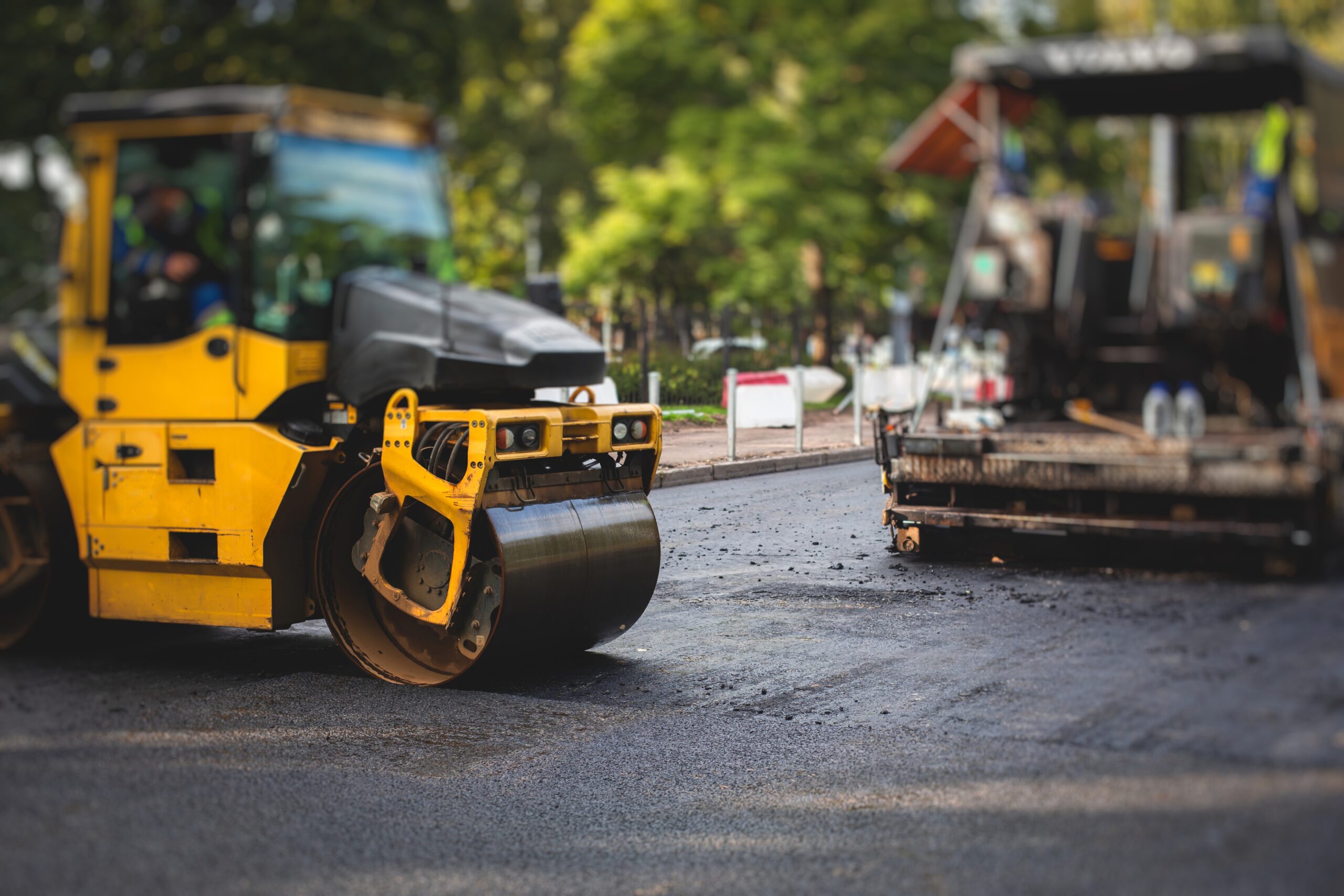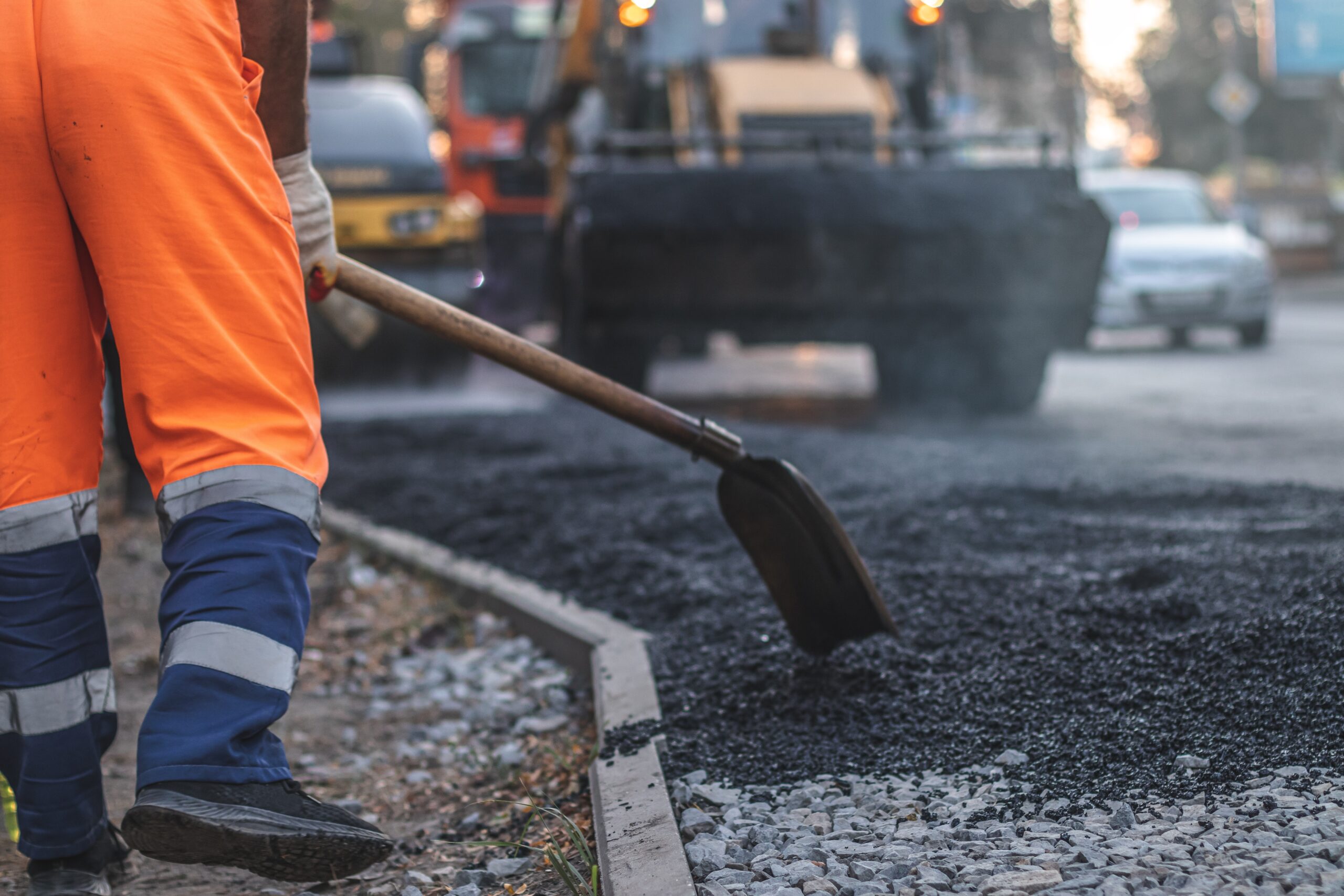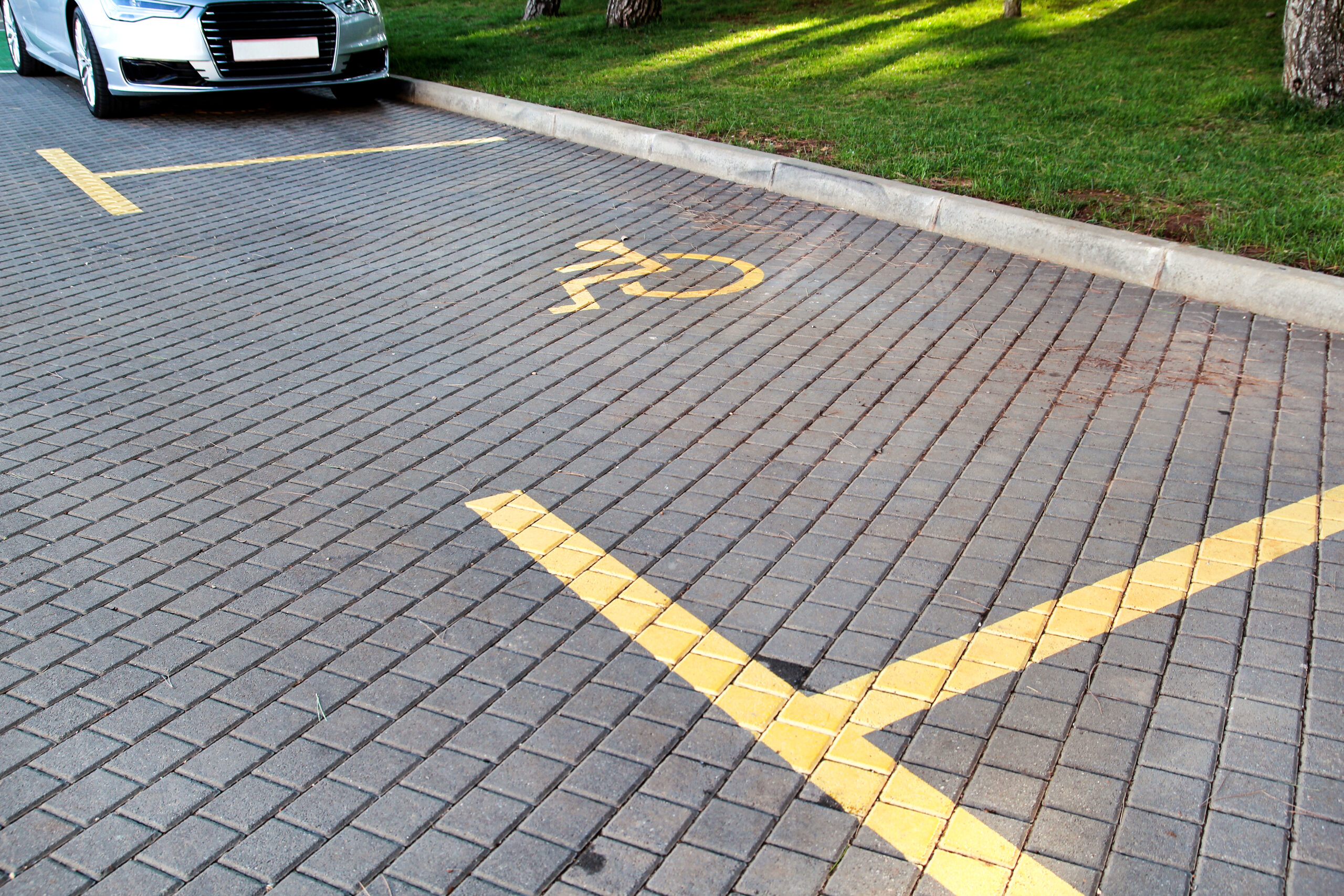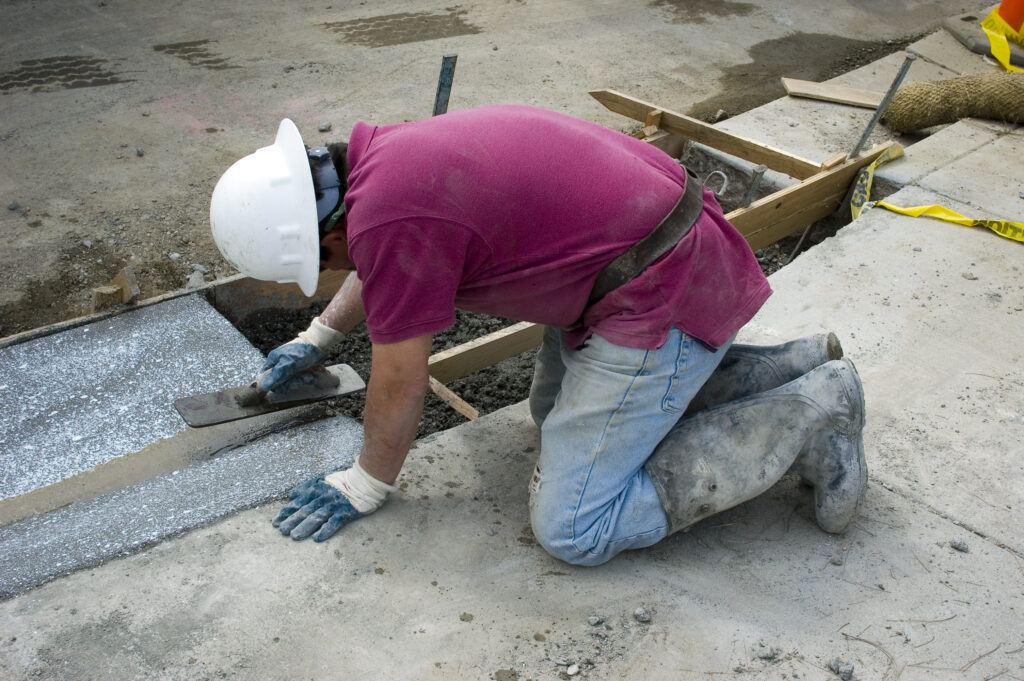
Concrete is the preferred material for curb and gutter across Colorado Springs, especially in public works, sidewalks, and roadway projects. The City’s published standards are based on concrete design, making it the most practical choice for gaining approvals and staying consistent with local requirements.
Colorado’s climate puts pavement to the test. In freeze-thaw research by the Federal Highway Administration, concrete mixes with proper air void systems (around 6 ± 1 % air content and a spacing factor below 0.20 mm) showed markedly better durability under repeated cycles. Concrete resists freeze-thaw damage far better than poorly designed alternatives when mixed with appropriate air entrainment, placed on a stable subgrade, and finished with well-designed joints. Its long life means less maintenance, fewer traffic disruptions from repairs, and more dependable gutter flow control.
For city planners, contractors, and property owners, concrete provides a reliable balance of strength, drainage, and life-cycle value.
In this blog, we’ll look at the city standards that govern curb and gutter in Colorado Springs, where to find official plan details, and why concrete continues to be the material of choice for long-lasting infrastructure.
City Standards That Govern Curb and Gutter in Colorado Springs
Colorado Springs publishes standard details and plan requirements for curb and gutter. These standard drawings set typical curb profiles, jointing, construction notes, and plan approval steps that apply to work in the public right of way. Using the city details makes permitting and inspection easier and helps avoid rework.
Where to Find Standard Details and Plan Requirements
The City Engineering Division provides city-standard details for curb and gutter in Colorado Springs. These documents include approved curb profiles, gutter widths, jointing requirements, and construction notes that contractors must follow when working in the public right-of-way.
Standard plans and permitting information can be accessed on the City of Colorado Springs Engineering Standards and Details page, which provides downloadable drawings and plan preparation guidelines. Following these published details helps streamline the approval process and ensures curb and gutter installations meet local codes.
Colorado Climate Challenges and What They Mean for Materials
Colorado Springs experiences freeze-thaw cycles, large temperature swings, and the use of deicing salts in some areas. These conditions cause stress on the pavement surface and curb exposed faces. Materials not designed for freeze-thaw exposure will scale, crack, and fail faster here than in milder climates. Mix design and placement practices are more important than a simple material choice.
How Freeze-Thaw Cycles Affect Curb and Gutter
Repeated freezing and thawing forces moisture in concrete to expand and contract. Concrete with a properly entrained air-void system relieves that stress and greatly reduces scaling and spalling. According to FHWA research, entrained air helps improve freeze-thaw durability and resistance to scaling from deicing chemicals. Using non-air-entrained mixes or poor curing will dramatically shorten service life.
Daily Temperature Swings And Material Stress
Rapid daytime heating and nighttime cooling cause thermal movement in concrete. Jointing, correct slab thickness, and compatible subgrade support let concrete move in a controlled way so cracks happen at planned locations. Good joint layout reduces random cracking and reduces repair needs.
Durability and Lifespan Compared to Other Options
Concrete curbs and gutters often last decades. According to research on concrete deterioration and lifespan, well‐constructed concrete structures commonly deliver 50 years or more of service life under normal service conditions. By contrast, asphalt curbing and temporary materials tend to require more frequent repair or replacement under heavy loads and freeze-thaw stress. That extended lifespan helps justify the higher initial cost for many municipalities and property owners.
Typical Service Life for Concrete Curb and Gutter
When concrete curbs are built to city or state standards, with good mix control and a solid base, service lives of several decades are typical. Local municipalities plan for that long duration, which lets them budget lower maintenance over time. Realistic performance will depend on traffic intensity, drainage quality, and exposure to deicing salts.
How Alternatives Fail in Local Conditions
Asphalt curbs soften during hot summer days and can rut under repeated turning loads. They also tend to allow water infiltration at edges, which accelerates undercutting in freeze-thaw cycles. Temporary fixes and inferior materials increase repair frequency and traffic interruptions. Concrete, properly designed and placed, limits edge movement and resists undercutting on a stable foundation.
How Concrete Protects Pavement Edges from Traffic Damage
Concrete curbs provide rigid edge support that reduces edge cracking in adjacent asphalt or concrete pavement. That support helps asphalt pavement sections carry turning loads and heavy wheel loads without rapid deterioration at the joint between pavement and shoulder. In short, concrete curbs protect the pavement system as a whole.
Edge Support for Turning Vehicles and Heavy Loads
Curbs act like beams at the pavement edge. By holding the pavement section in place, concrete prevents the edge from collapsing under short-term concentrated loads like truck turnings or driveway wheel loads. A rigid curb reduces the need for frequent edge repairs.
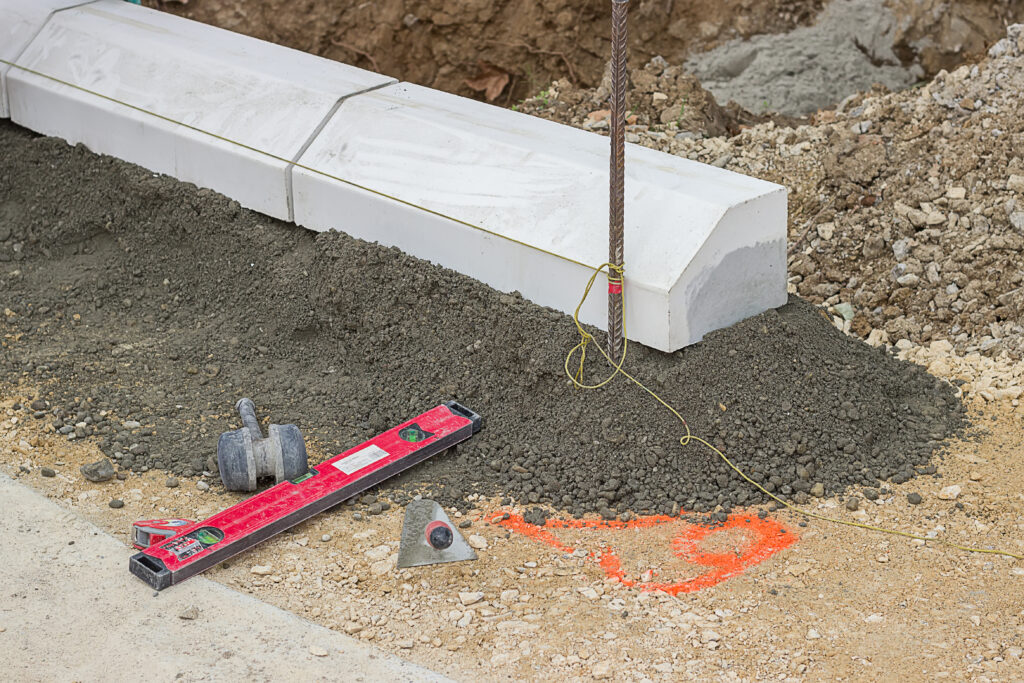
Interaction with Sidewalks Driveways, and Roadway Slabs
When curb transitions to sidewalks, driveways, or roadway slabs are detailed properly with dowels, matched joints, and monolithic pours, it helps transfer loads and control where cracks form. Using matched joint patterns and tying the sections together minimizes differential movement and improves long-term durability. The Federal Highway Administration’s technical guidance on concrete pavement joints underscores how proper joint layout and construction help prevent spalling, faulting, and crack propagation.
How Concrete Improves Stormwater Control and Drainage
Concrete curb and gutter shapes flow predictably along the street so water reaches inlets and drains rather than ponding or infiltrating under the pavement edge. The shape and grade of gutter flowlines matter for self-cleaning and to prevent undercutting that causes pavement failure. Bituminous Roadways
Why Shape and Grade Matter for Runoff
A consistent gutter line and correct cross slope send water to inlets and downstream drainage. Cross pan and gutter details used in city plans are designed to move runoff efficiently and reduce localized erosion. Good formwork and grade checks during placement maintain the designed flowline.
Integration With Inlets Gutters, and Roadside Drainage Features
Curb details commonly include inlet connections and transitions to swales. When curb layout and inlet spacing are coordinated, stormwater is collected close to the source, and pavement undercutting is minimized. City standard details include inlet and curb connection drawings for typical conditions.
Upfront Cost Versus Long-Term Value
Concrete curbs and gutters usually have a higher initial price than asphalt or temporary alternatives. However, over the life of the feature, concrete frequently costs less per year because it needs fewer repairs and replacement cycles. For public works budgets and property owners focused on long-term value, concrete often wins.
Comparing Initial Cost and Life Cycle Cost
Life cycle comparisons account for initial installation, routine repairs, major replacements, and traffic control for maintenance. Because concrete repairs are less frequent and concrete responds predictably to good construction practice, the total cost of ownership often favors concrete for municipal curb applications. Use local unit prices and expected service life to do a simple life cycle analysis for your site.
Repair Frequency, Traffic Impac,t and Total Cost Of Ownership
Frequent repairs mean more traffic disruption. Concrete curb and gutter reduce the number of repair events. For businesses and busy streets, fewer repair closures reduce indirect costs and public complaints, which has value beyond raw dollars.
Best Practice Design and Installation Notes for Colorado Springs
When designing and building curbs and gutters, follow local standard details and state specifications. Use air-entrained concrete for freeze-thaw exposure, compacted and well-drained subgrade, correct jointing patterns, and good curing practice. These details make the difference between a short-lived slab and a durable installation.
Recommended Mixes: Air-Entrained Concrete And Admixtures
Air entrainment is the key protection in freeze-thaw climates. Federal and state guidance specify target air contents and testing methods. For exposed concrete in Colorado, use mix designs and admixtures consistent with CDOT and ACI guidance.
Subgrade Preparation, Jointin,g Curing, and Protection
Prepare a stable, well-drained subgrade and use consistent compaction. Follow recommended joint spacing and provide dowels or keying where the curb links to slabs or driveways. Cure concrete properly for the recommended period to develop strength and frost resistance. City and state specs describe acceptable execution.
Permitting Grade Control and Inspection Tips
Submit plan and profile drawings to the city to get line and grade approval before work begins. During placement, verify form alignment, flowline grade, and joint locations with the inspector. Proper documentation and inspection avoid rework and delays.
Common Problems and How to Avoid Them
Common failures include freeze thaw scaling, settlement from poor subgrade, undercutting from bad drainage, and random cracking from poor jointing. Most of these are avoidable with correct mix, support and detail work.
Freeze Damage Scaling and Spalling
Use air-entrained mixes, limit water content, and cure properly. Avoid early exposure to deicing chemicals until the concrete has reached adequate maturity.
Settlement, Poor Drainage, And Undercutting
Compact the subgrade, provide drainage away from the curb and backfill, and extend base material under the curb, as shown in the details. Check inlet spacing so runoff does not concentrate at weak spots.
Poor Jointing and Random Cracking
Follow the recommended joint spacing for the curb length and use contraction joints to control crack locations. Match joints where the curb meets the sidewalk or pavement to avoid offset cracks.
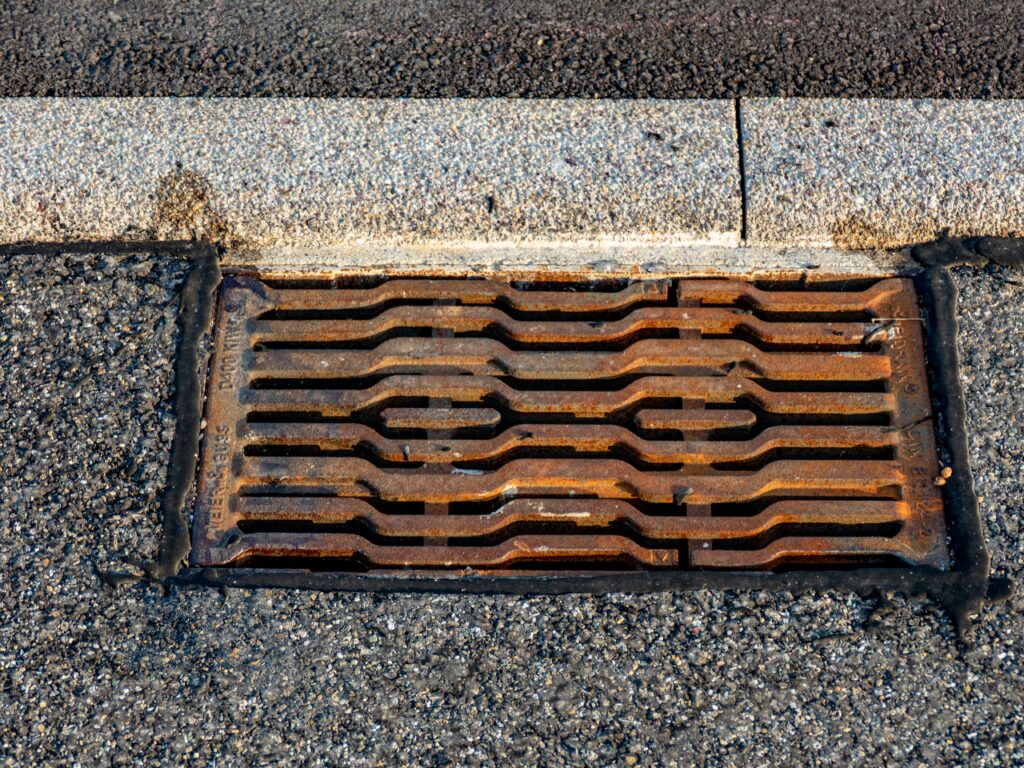
Frequently Asked Questions
How long will a concrete curb last in Colorado Springs?
With a good mix, subgrade, and drainage, expect decades of service. For curb and gutter installed to standards, the typical life is 25 to 50 years.
Do I need a special mix for freeze-thaw conditions?
Yes. Use an air-entrained mix with an appropriate cementitious content and a low water-to-cement ratio. Follow ACI, FHWA, and state specs for target air and testing.
Can I replace the asphalt curb with concrete?
Yes. Many curb improvements replace temporary asphalt with concrete for longer life. Plan for proper tie-in, jointing, and city approvals for line and grade.
Who approves curb grades and connections to public streets?
The city engineer or designated public works official approves the line and grade for any curb or gutter that connects to the public street. Submit plan and profile drawings as required by the public works design manual.

